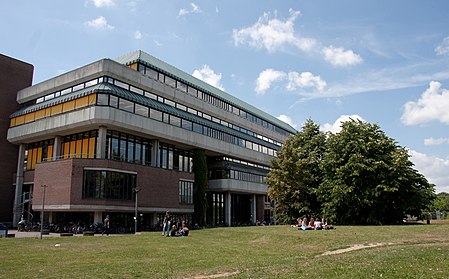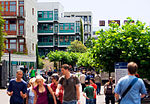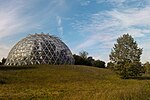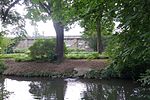University and State Library Düsseldorf
Academic libraries in GermanyDeposit librariesEducation in DüsseldorfHeinrich Heine University DüsseldorfLibrary buildings completed in 1970

The University and State Library Düsseldorf (German: Universitäts- und Landesbibliothek Düsseldorf, abbreviated ULB Düsseldorf) is a central service institution of Heinrich Heine University. Along with Bonn and Münster, it is also one of the three State Libraries of North Rhine-Westphalia.
Excerpt from the Wikipedia article University and State Library Düsseldorf (License: CC BY-SA 3.0, Authors, Images).University and State Library Düsseldorf
Universitätsstraße, Dusseldorf Bilk (Stadtbezirk 3)
Geographical coordinates (GPS) Address Website Nearby Places Show on map
Geographical coordinates (GPS)
| Latitude | Longitude |
|---|---|
| N 51.190277777778 ° | E 6.7941666666667 ° |
Address
Heinrich-Heine-Universität Düsseldorf
Universitätsstraße 1
40225 Dusseldorf, Bilk (Stadtbezirk 3)
North Rhine-Westphalia, Germany
Open on Google Maps









